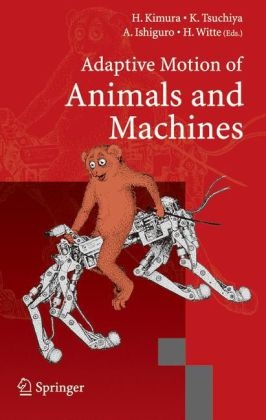Read more
The principles of adaptation to various environments have not yet been clarified. Furthermore, autonomous adaptation remains unsolved and a seriously difficult problem in robotics. Apparently, the adaptation ability shown by animals and that needed by robots in the real world cannot be explained or realized by one single function in a control system and mechanism. That is, adaptation in motion is induced at every level in a wide spectrum from the central neural system to the musculoskeletal system. This book contains the papers selected carefully from the symposium AMAM2003 particularly concerning adaptation in locomotion from the viewpoint of robotics and neurophysiology. Due to this restriction in topics adopted, we expect that this book will efficiently provide good information for scientists and engineers, which is useful to discuss the principles and mechanisms underlying animals' adaptation under unstructured environment .
List of contents
Higher Level Control of Locomotion.- Analysis and Control of Locomotion.- Control Principles from Biologically Inspired Machine.- Rhythmic Motion Analysis and Implementation.- Dynamic and Adaptive Locomotion.- Neural Control and Learning.- Modeling and Analysis of Locomotion.- Biologically Inspired Machine Design and Control Architecture.- Robot Brain.- Mobiligence.
Summary
• Motivation It is our dream to understand the principles of animals’ remarkable ability for adaptive motion and to transfer such abilities to a robot. Up to now, mechanisms for generation and control of stereotyped motions and adaptive motions in well-known simple environments have been formulated to some extentandsuccessfullyappliedtorobots.However,principlesofadaptationto variousenvironmentshavenotyetbeenclari?ed,andautonomousadaptation remains unsolved as a seriously di?cult problem in robotics. Apparently, the ability of animals and robots to adapt in a real world cannot be explained or realized by one single function in a control system and mechanism. That is, adaptation in motion is induced at every level from thecentralnervoussystemtothemusculoskeletalsystem.Thus,weorganized the International Symposium on Adaptive Motion in Animals and Machines(AMAM)forscientistsandengineersconcernedwithadaptation onvariouslevelstobebroughttogethertodiscussprinciplesateachleveland to investigate principles governing total systems. • History AMAM started in Montreal (Canada) in August 2000. It was organized by H. Kimura (Japan), H. Witte (Germany), G. Taga (Japan), and K. Osuka (Japan), who had agreed that having a small symposium on motion control, with people from several ?elds coming together to discuss speci?c issues, was worthwhile. Those four organizing committee members determined the scope of AMAM as follows.
Additional text
From the reviews:
"This book, which is a collection of 23 papers presented at the first two International Symposia on Adaptive Motion in Animals and Machines (AMAM) … . This book is an outstanding collection of writings by key investigators in the field, and it is highly recommended to researchers in robotics interested in building biologically inspired machines." (G. A. Bekey, Computing Reviews, August, 2006)
Report
"This book, which is a collection of 23 papers presented at the first two International Symposia on Adaptive Motion in Animals and Machines (AMAM). This book is an outstanding collection of writings by key investigators in the field, and it is highly recommended to researchers in robotics interested in building biologically inspired machines." (G. A. Bekey, Computing Reviews, August, 2006)

